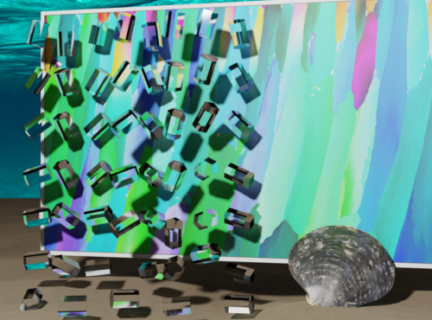Team around Dr. Wolf publishes article in Materials Advanced
Biominerals – shells, teeth or even bones – are ceramics generated by organisms whose function and resilience have been evolutionarily optimized over millions of years. In contrast to conventional, synthetic ceramics, these biological ceramics often exhibit very complex and well-controlled crystallographic textures (i.e., the spatial arrangement of crystalline mineral grains).
In this work, we show that a gradually changing texture also leads to a gradual change in the material properties, in this case the elasticity coefficients. Using oyster shells as an example, we show that such a texture gradient produces a functional gradient material that increases the fracture toughness of the shell, making it significantly less sensitive and more resistant to mechanical attack, e.g., by predators.
The black-lipped pearl oyster thus not only gives an impression of how complex even seemingly simple mussel shells are, it also provides us with an elegant blueprint for a new and bioinspired class of functional gradient materials that can be used in the future to generate more damage-tolerant, fracture-resistant and thus more durable materials, or to better understand the properties of other complex biominerals such as bone.
The full article was published on Materials Advanced.
Contact:
PD Dr. rer. nat. Stephan E. Wolf
Department of Materials Science and Engineering
Chair of Glass and Ceramics
- Phone number: +49 9131 85-27565
- Email: stephan.e.wolf@fau.de
